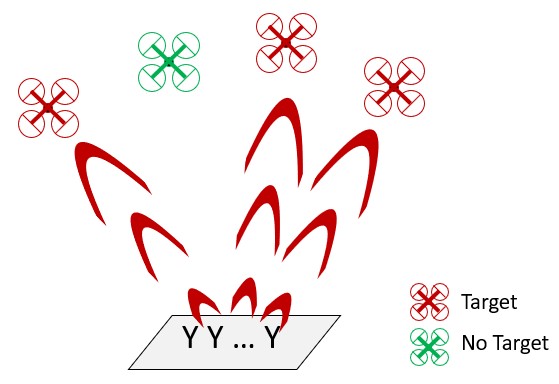The rapid development of unmanned aerial systems drives exponential growth and represents an asymmetrical threat situation as a potential means of attack against the background of inefficient defense options. The focus of MCUAS is the basic theoretical analysis of the properties and functioning of UAS swarms, their strengths and weaknesses and the resulting from them derived defense strategies for a subsequent decision support, as well as derived concepts and strategies for their efficient defense, and methods and procedures of electro-optics, acoustics, radar and communication technology for the detection of potential attackers in areas to be protected, verification of the detected objects and intervention to ward off threats from several threats . The focus is on the defense against swarms of UAVs from different directions by means of communications interventions using a multi-antenna system with electronically controlled directional characteristics.
Start: 01.11.2019
Ende: 31.10.2021
Goals:
The two main objectives of the MCUAS research project are:
- Fundamental analysis of the characteristics and capabilities of UAS swarms, their strengths and weaknesses regarding threat patterns and countermeasures, as well as derived concepts and strategies for efficient defence.
- Establish multimodal methods and procedures for detecting potential attackers in restricted areas, verifying and representing potential attackers in a command and control system, and mitigating multiple threats.
From the wireless tecnology point of view the aim is to expand an existing multiple antenna system with electronic directional characteristics by an adaptive directional characteristic that can be controlled in real time and that is specially adapted to fast-moving drones and swarms of drones.
Results:
The development and adaption of a radio system with multiple antennas to enable targeted interference and manipulation of communication and navigation. This currently includes the ability to act for one direction and it is being further developed with regard to the threat from the airspace by several attackers, who can be countered either in different directions or by expanded spatial concentration.
Webpage: https://www.forte-bmlrt.at/en/financed-proposals/detail/d/mcuas-1/
Funding: FFG Forte
Partner:
- AIT Austrian Institute of Technology GmbH (AIT)
- JOANNEUM RESEARCH Forschungsges. GmbH (JR)
- Lakeside Labs GmbH (LS)
- active photonics GmbH (APH)
- INRAS GmbH (INR)
- Bundesministerium für Landesverteidigung (BMLV)




